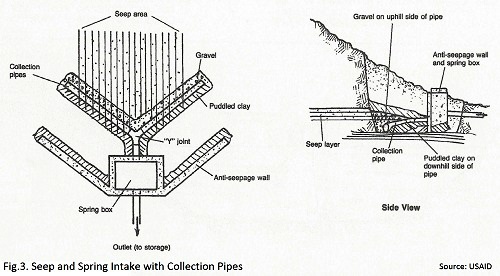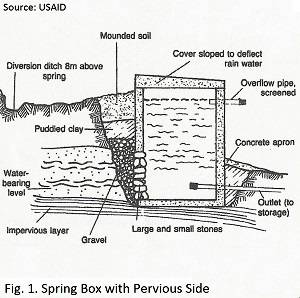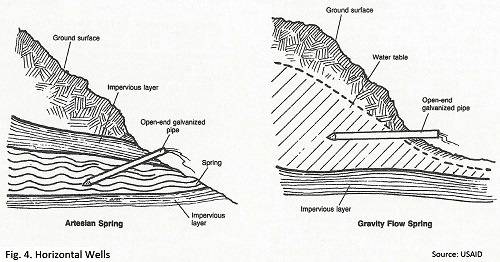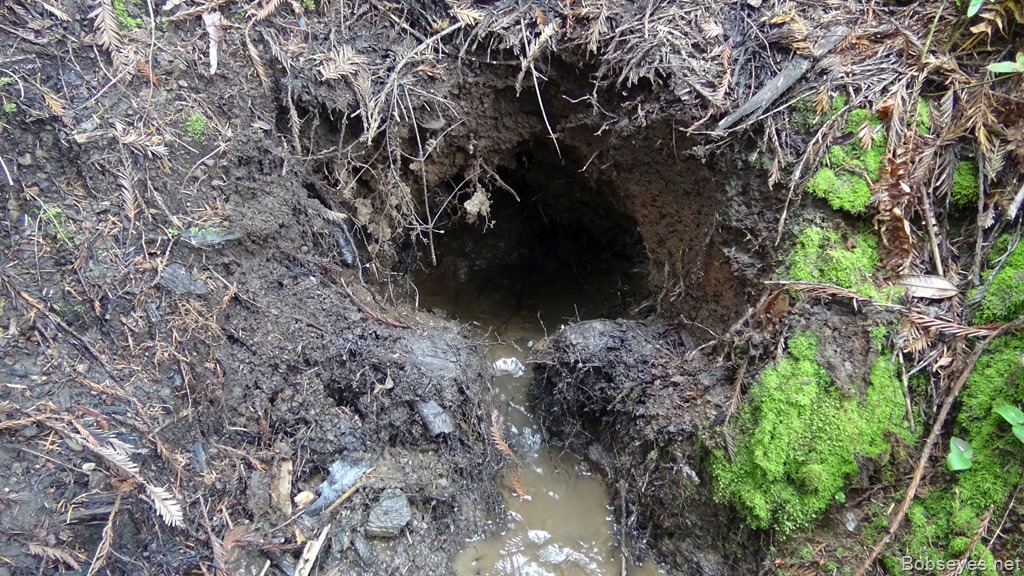Your Digging out a natural spring images are available. Digging out a natural spring are a topic that is being searched for and liked by netizens now. You can Get the Digging out a natural spring files here. Get all royalty-free photos and vectors.
If you’re searching for digging out a natural spring pictures information related to the digging out a natural spring topic, you have come to the ideal site. Our site frequently gives you suggestions for seeing the highest quality video and image content, please kindly search and locate more informative video content and images that fit your interests.
Digging Out A Natural Spring. Dig a trench that is approximately 2 feet wide and 6 inches deep using a powered trencher. Sandier soil will require the hole to be farther back 510 feet than clay soil 35 feet. Adjacent to your damp area dig a hole about the size of a basketball which will hold several gallons of water. My husband said there was a way to test for water by holding some kind of sticks perpendicular to the ground and when the sticks crossed there was water at that given spot.
 Spring Development Step By Step Youtube From youtube.com
Spring Development Step By Step Youtube From youtube.com
One way to dig out a spring is find where the water is coming out and excavate that area going backwards until you hit the cracks in the rocks. Josh is digging an off grid natural hill side spring. With its 28 foot reach you can easily build a 60 foot diameter pond without moving material twice. The rock shelf is about 7 feet higher than. Use a trenching shovel to scoop out any excess soil remaining in the. Determination and persistence are required however the reward is discovering new springs in your seep and watching the water flow increase.
Step by step guide to digging your spring.
Use a trenching shovel to scoop out any excess soil remaining in the. Spring water comes from aquifers groundwater in layers of limestone and sandshell similar to a sponge. In this video I will show what to look for when trying to locate a springFor video updates and homestead extras just visit and like my Facebook Page ht. I ahve several on my land. If there is not a natural spring how would we go about testing for a good spot for a well and manually digging it ourselves. The spring is under a horseshoe shaped Rock shelf.
 Source: youtube.com
Source: youtube.com
In this video I will show what to look for when trying to locate a springFor video updates and homestead extras just visit and like my Facebook Page ht. Just a chance you take. If you see some water flowing out take a look at the trees that could be sucking most of the water that would be going to that spring. The perfect situation for pond building is an excavator in the 30000 pound class or higher with a 34 to 1 cubic yard bucket so that you can quickly scoop the inside of the pond out and cast it to the outside. If you are planning on digging it by hand be forewarned that its probably going to be much more difficult than you think.
 Source: youtube.com
Source: youtube.com
Place one end of a channeling source such as a plastic pipe as deep into the water source as possible. A small area is dug out around the spring and lined with gravel. Digging out a pond is done either by hand or with earth-moving equipment. Carefully dig into the hillside until you reach a steady flow of water. Placing rocks or gravel around and under the channeling source will help prevent sediment from getting through and help prevent the pipe from.
 Source: thefarmingforum.co.uk
Source: thefarmingforum.co.uk
The flow rate of a spring can be tested by digging a 5-gallon bucket into the slope of the spring and allowing the water to flow into the bucket. Monday I was looking for the spring head and setting up a budget garden and chicken fenceI have been digging around looking for the spring head for a few da. Be sure to dig deeply enough to get a clean avenue to place a channeling source. The cover prevents contamination and should be heavy enough to keep people from removing it to dip buckets and cups into the collection box. You can also dig a seep next to a lake stream or pond by digging back from the edge.
 Source: permies.com
Source: permies.com
A well driller would not help. If a home is caught in this water system it could suffer from water damage. Place one end of a channeling source such as a plastic pipe as deep into the water source as possible. Tapping Water from a Natural Hillside Spring - Ozark Foothills - YouTube. Spring water comes from aquifers groundwater in layers of limestone and sandshell similar to a sponge.
 Source: clean-water-for-laymen.com
Source: clean-water-for-laymen.com
Josh is digging an off grid natural hill side spring. Just a chance you take. We are doing it by hand and do not have the money for heavy equipment. Use a trenching shovel to scoop out any excess soil remaining in the. Throw one scoop out and two slide in.
 Source: clean-water-for-laymen.com
Source: clean-water-for-laymen.com
You can possible dig into the spring head and open it up and it will flow freely. Tapping Water from a Natural Hillside Spring - Ozark Foothills. The rule of thumb is that it should hold at least a half days supply of water. There is actually mud on both sides of the horseshoe. Just a chance you take.
 Source: permies.com
Source: permies.com
Hand digging in the mud is the resultant task if the ground is too soft. We are building our sustainable homestead from scratch and creating our water sourcesteepinthewoods. One cubic foot of water equals about 75 gallons You can build your own cache out of filled concrete block. Determine the flow rate by timing how long it takes the water to fill the bucket. Placing rocks or gravel around and under the channeling source will help prevent sediment from getting through and help prevent the pipe from.
 Source: clean-water-for-laymen.com
Source: clean-water-for-laymen.com
A concrete box with a removable cover is placed over the spring to collect and store the water. Carefully dig into the hillside until you reach a steady flow of water. Digging out a pond is done either by hand or with earth-moving equipment. I ahve several on my land. The perfect situation for pond building is an excavator in the 30000 pound class or higher with a 34 to 1 cubic yard bucket so that you can quickly scoop the inside of the pond out and cast it to the outside.
 Source: instructables.com
Source: instructables.com
So we are digging out a spring on our 30 acres. Just a chance you take. It can be a bit like shoveling dry sand. Spring water comes from aquifers groundwater in layers of limestone and sandshell similar to a sponge. Tapping Water from a Natural Hillside Spring - Ozark Foothills.
 Source: youtube.com
Source: youtube.com
A concrete box with a removable cover is placed over the spring to collect and store the water. Digging out a pond is done either by hand or with earth-moving equipment. One cubic foot of water equals about 75 gallons You can build your own cache out of filled concrete block. The cover prevents contamination and should be heavy enough to keep people from removing it to dip buckets and cups into the collection box. The perfect situation for pond building is an excavator in the 30000 pound class or higher with a 34 to 1 cubic yard bucket so that you can quickly scoop the inside of the pond out and cast it to the outside.
 Source: oneacrevintagehome.com
Source: oneacrevintagehome.com
Use a trenching shovel to scoop out any excess soil remaining in the. The flow rate of a spring can be tested by digging a 5-gallon bucket into the slope of the spring and allowing the water to flow into the bucket. Generally trying to stop a natural spring is a lost cause on a residential scale - controlling the water and getting it into a form you can handle is almost always the cheapest solution - normally by either diverting the flow as it exits the ground or sometimes by putting in a bordered pond at the exit point then controlling the water as it exits the pond. I have seen springs that never quit and I have seen them run 2 or 3 months a year based on the water table and how much rain we get. If you are planning on digging it by hand be forewarned that its probably going to be much more difficult than you think.
 Source: bobseyes.net
Source: bobseyes.net
You can also dig a seep next to a lake stream or pond by digging back from the edge. Determine the flow rate by timing how long it takes the water to fill the bucket. The spring is under a horseshoe shaped Rock shelf. If you see some water flowing out take a look at the trees that could be sucking most of the water that would be going to that spring. If there is not a natural spring how would we go about testing for a good spot for a well and manually digging it ourselves.
 Source: instructables.com
Source: instructables.com
Step by step guide to digging your spring. I ahve several on my land. Throw one scoop out and two slide in. If the water table drops it may quit all together. Diverting this water can be done in several ways.
 Source: instructables.com
Source: instructables.com
If you see some water flowing out take a look at the trees that could be sucking most of the water that would be going to that spring. We chose the muddiest side this is a drought after all and started digging. Determination and persistence are required however the reward is discovering new springs in your seep and watching the water flow increase. If a home is caught in this water system it could suffer from water damage. Diverting this water can be done in several ways.
 Source: survivalsullivan.com
Source: survivalsullivan.com
Carefully dig into the hillside until you reach a steady flow of water. I have seen springs that never quit and I have seen them run 2 or 3 months a year based on the water table and how much rain we get. The spring is under a horseshoe shaped Rock shelf. Generally trying to stop a natural spring is a lost cause on a residential scale - controlling the water and getting it into a form you can handle is almost always the cheapest solution - normally by either diverting the flow as it exits the ground or sometimes by putting in a bordered pond at the exit point then controlling the water as it exits the pond. The rule of thumb is that it should hold at least a half days supply of water.

You can possible dig into the spring head and open it up and it will flow freely. Carefully dig into the hillside until you reach a steady flow of water. The perfect situation for pond building is an excavator in the 30000 pound class or higher with a 34 to 1 cubic yard bucket so that you can quickly scoop the inside of the pond out and cast it to the outside. You can possible dig into the spring head and open it up and it will flow freely. You can also dig a seep next to a lake stream or pond by digging back from the edge.
 Source: pinterest.com
Source: pinterest.com
One cubic foot of water equals about 75 gallons You can build your own cache out of filled concrete block. You can possible dig into the spring head and open it up and it will flow freely. If you see some water flowing out take a look at the trees that could be sucking most of the water that would be going to that spring. If there is not a natural spring how would we go about testing for a good spot for a well and manually digging it ourselves. Determination and persistence are required however the reward is discovering new springs in your seep and watching the water flow increase.
 Source: youtube.com
Source: youtube.com
If the water table drops it may quit all together. If the water table drops it may quit all together. The spring is under a horseshoe shaped Rock shelf. Placing rocks or gravel around and under the channeling source will help prevent sediment from getting through and help prevent the pipe from. The rock shelf is about 7 feet higher than.
This site is an open community for users to share their favorite wallpapers on the internet, all images or pictures in this website are for personal wallpaper use only, it is stricly prohibited to use this wallpaper for commercial purposes, if you are the author and find this image is shared without your permission, please kindly raise a DMCA report to Us.
If you find this site beneficial, please support us by sharing this posts to your own social media accounts like Facebook, Instagram and so on or you can also save this blog page with the title digging out a natural spring by using Ctrl + D for devices a laptop with a Windows operating system or Command + D for laptops with an Apple operating system. If you use a smartphone, you can also use the drawer menu of the browser you are using. Whether it’s a Windows, Mac, iOS or Android operating system, you will still be able to bookmark this website.





